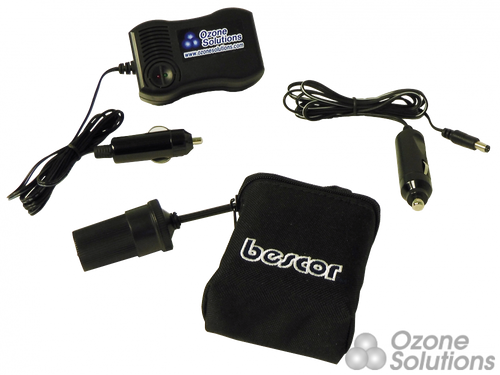Product Overview
![]()
The Model 106-L is designed for ambient ozone monitoring for health and safety monitoring in an industrial ozone setting based on the accurate method of UV absorbance.. A simple design with all components mounted to a single printed circuit board and a long-life pump make the instrument highly reliable and robust. Ozone is measured in the range 0-100 ppm (0-100,000 ppb) with a resolution of 0.1 ppb. Precision and accuracy for this low-concentration ozone monitor are [plusminus]2 ppb or 2% of reading.
| Optional Accessories | Description |
|---|
Features
- Easy-to-Use Interface - simply power on and begin sampling
- Active sampling via built-in pump
- Built-In Data logging
- Benchtop, NEMA & OEM configurations available
| More Information |
|---|
FAQ's
What is the maximum amount of tubing I can use to transport ozone to the analyzer?
30 feet of tubing would be the maximum length of tubing recommended.
Can the internal pump operate continuously?
Yes. The pump has a rated lifetime of 5,000 hours (7 months).
Can I use a different program than Hyper-terminal to collect the data?
Yes. A program called Tera-Term is available at the following website: http://hp.vector.co.jp/authors/VA002416/teraterm.html The Tera-Term program is preferred since Hyper-terminal only has a 500 line buffer limit.
Does elevation affect the accuracy of the ozone analyzer?
No. The accuracy of the analyzer will only vary 1-2 PPB for any elevation of 7,000-ft or less.
Is the ozone analyzer sensitive to other gases?
The UV Absorption method of detecting ozone is highly resistant to cross-sensitivity (interference) from other gases, however there are some that may affect readings.
Specifically, organic compounds containing aromatic rings (benzene, toluene, xylene, etc.) and Nitrogen Dioxide (NO2) may cause interference up to several parts per billion (ppb) in highly polluted air.
The rule of thumb is that NO2 contributes a 1% interference for low-range analyzers, so 100 ppb of NO2 reads as 1 ppb Ozone on the analyzer.
How often does this monitor require calibration?
The manufacturer recommends a yearly calibration. The readings of all ozone monitors will start to stray over time and need to be corrected when possible.
How often should the unit be re-zeroed?
Upon receipt of the UV-106, you should re-zero the unit so it is set properly for your location. The electronic zero of the instrument may be measured by attaching an ozone destruction cartridge to the air inlet for a period of 5-10 minutes.
For an accurate measurement, the instrument must have been turned on long enough for the internal temperature to stabilize. The observed offset, which can amount to plus or minus a few ppb, can be corrected for by changing this calibration parameter from the front panel, as described below.
Because of noise or an inherent offset, some measured values will be below zero at very low ozone mixing ratios or while zeroing the instrument with an external scrubber. Also, the instrument zero may drift by a few ppb over time. For this reason, frequent zeroing of the instrument using an external ozone scrubber to determine the offset is recommended. If the instrument reads an average of 3 ppb with the external scrubber in place, the value of Z should be set to negative 3.
What type of serial (RS-232) cable do I need to connect my UV Analyzer to my computer's serial port?
For a serial connection, you will need a straight-through cable with female-to-female DB-9 connectors.
How accurate is the UV-106L with very low levels of ozone?
Any readings below 100 ppb will have accuracy of +/- 2.0 ppb. Any reading at or above 100 ppb will have accuracy of +/- 2 percent of reading.
What is the maximum amount of tubing I can use to transport ozone to the analyzer?
30 feet of tubing would be the maximum length of tubing recommended.
At what low levels will the UV-106L be accurate?
The UV-106L can start reading ozone with some accuracy at 10-20 ppb. However, it will be most stable starting at 50 ppb.
Warranty Information
California Regulatory Warning

Health hazard warning: emits ozone.
This product is not CARB Certified (Ozone Emissions for Air Cleaners).
Product Disclaimer: Does not meet California air cleaner regulation requirements; cannot be shipped to California.











